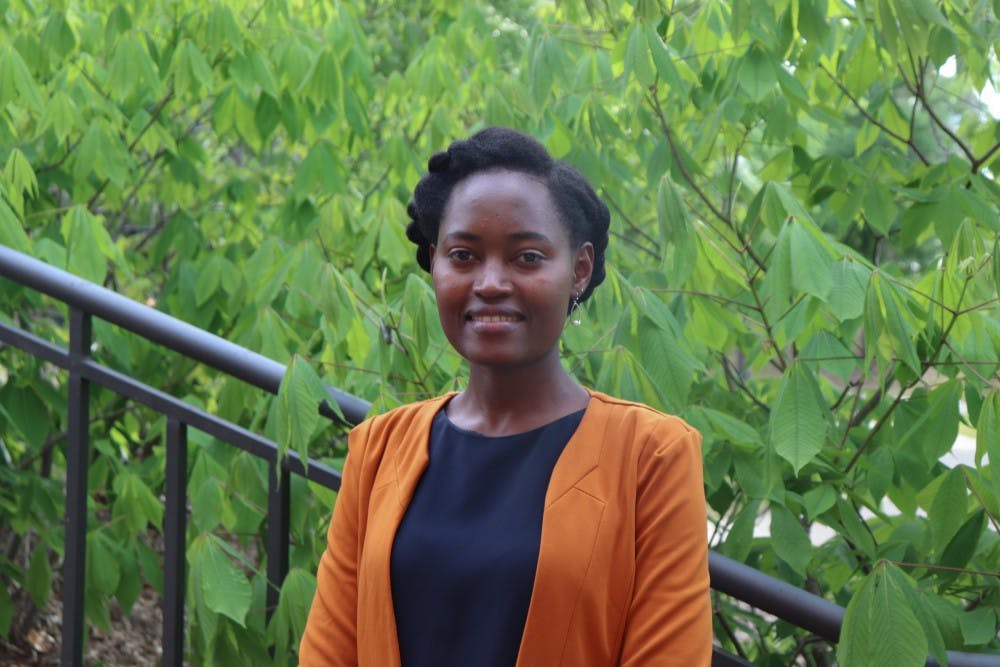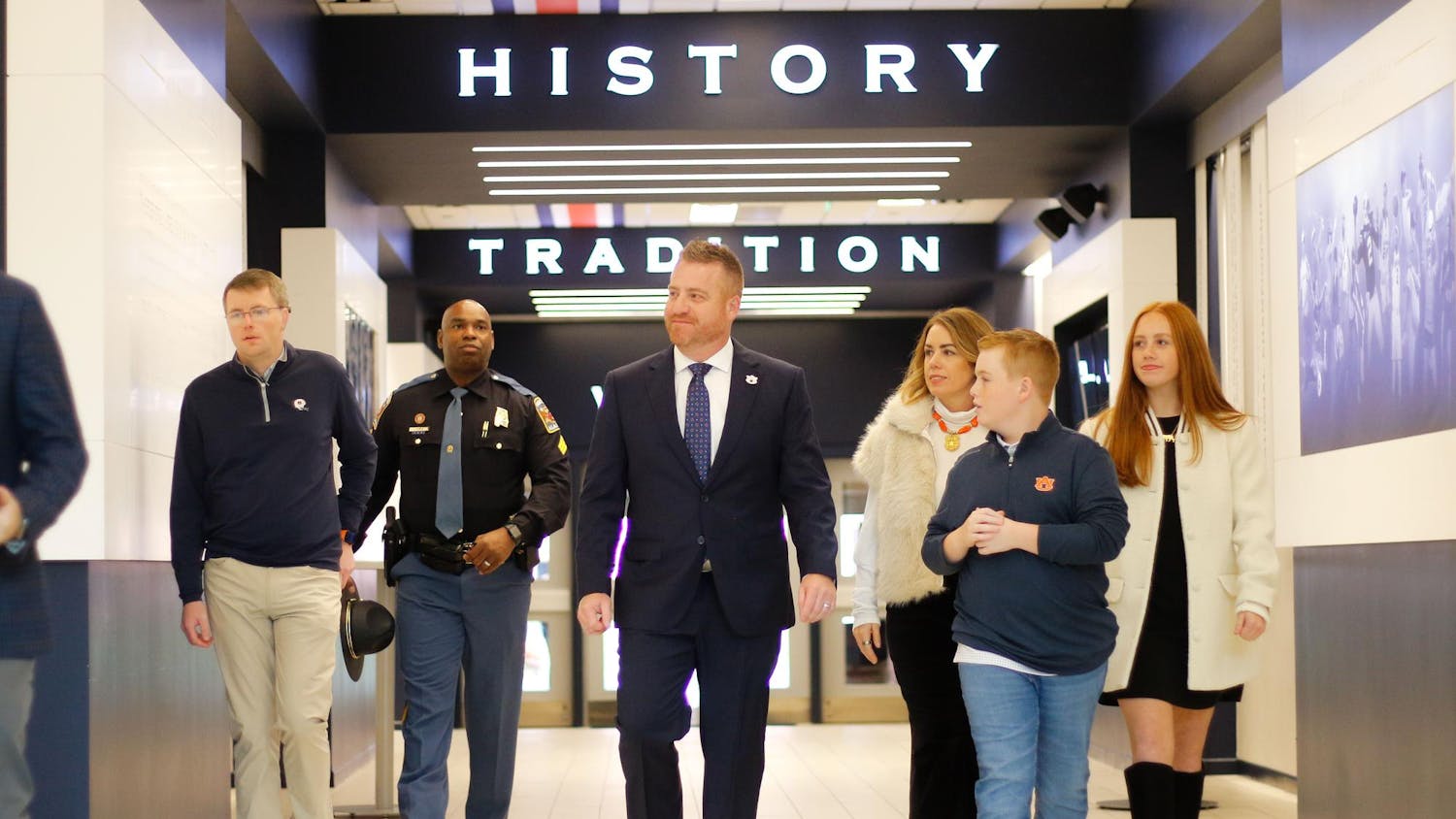At 7 months old, young Yvette Kayirangwa and her family huddled together, afraid to leave their house. Outside, radicals searched for them and people like them, adding names to an ever-growing list of people to kill.
The militants swept through villages and the neighborhoods of cities like Kigali, where the Kayirangwa family lived, annihilating anyone belonging to the “wrong” class of people.
But they couldn’t hide forever.
April 7 marked the 25th anniversary of the Rwandan genocide. This massacre defined Rwanda for decades, but the country emerged from the ashes.
It all started with a crash.
ONE HUNDRED DAYS OF BLOOD
When Rwandan president Juvénal Habyarimana’s plane was shot down, decades of ethnic resentment against the Tutsi people erupted into genocide.
The country was already in the midst of a brutal power struggle between the Rwandan government and the Rwandan Patriotic Front, a group of Tutsi refugees in neighboring countries looking to return to their homeland.
The United Nations Assistance Mission for Rwanda had troops stationed in the country to facilitate peace as the war concluded, but they were blindsided by — and completely incapable of preventing — the racially charged chaos. UNAMIR peacekeepers were only allowed to use their weapons in self-defense.
Through paved streets and dirt roads, Hutu voices echoed “cut down the tall trees,” a racially charged mantra to kill any Tutsi in sight. The ties that once united this community were now severed by the machetes of neighbors.
Over the next 100 days, over 800,000 Rwandans were killed and buried in mass graves. Most of the dead were Tutsi, victims of a vicious propaganda campaign that branded them as cockroaches and the source of all Rwandan problems.
The carnage was only stopped by the RPF, who steadily swept across the country and pushed militant Hutus, who orchestrated and participated in the genocide, out of Rwanda.
But Rwanda’s problems were not over. Now, Tutsis and Hutus had to figure out how to live together again.
TERROR IN THE AFTERMATH
“Man, people were so scared,” Kayirangwa said, now an Auburn chemistry doctoral student. “There was so much guilt on the side of perpetrators — the people who killed — and there was so much fear on the side of victims and survivors.”
Kayirangwa’s family had it better than most. In cities like Kigali, Tutsis like her mother were anonymous Rwandans, with only their IDs giving them away as Tutsi. In more rural areas, though, the group each family belonged to was hard to hide. Flying under the radar was essentially impossible.
In the decades following, these communities remained fractured.
According to Kayirangwa, some people were afraid to leave their houses. Seeing a neighbor with a machete cutting grass for their cow would cause them to flee, terrified that their life may be in danger.
Many of these people lost multiple — or all — members of their family at the hands of their neighbors, Kayirangwa said.
While perpetrators were punished for their crimes, eventually, they had to return to their communities, and all parties involved had to learn to live in the aftermath.
Communities relied on gacacas, a traditional Rwandan court system, to deliver justice.
Perpetrators would confess to their crimes, and others would give testimony of what happened. Survivors and families of victims were often in attendance, hoping to find answers.
“For a long time, people did not know where exactly their family members were buried,” Kayirangwa said.
Gacacas allowed families to find their lost loved ones and give them a proper burial, allowing them to begin the long process of healing and forgiveness.
“Of course, forgiving is not forgetting,” Kayirangwa said.
A MIRACLE
Kayirangwa’s family was eventually discovered in their Kigali home by militant Hutus and dragged off toward the pit where they were to be slaughtered and discarded.
While they were waiting for other victims to arrive at the pit, one of the militants burned Kayirangwa’s mother with a tip of a hot gun, leaving a scar on her ankle.
“Everybody in that neighborhood that was Tutsi, they were all sitting around that big hole,” Kayirangwa said.
As the militants were waiting for the signal to kill, the RPF arrived in that neighborhood, saving the lives of those Tutsi people. The perpetrators fled the country that day, once they realized that the RPF had reached them, Kayirangwa said.
“It was just by chance; it was a miracle,” Kayirangwa said.
Her family stayed in Kigali until 1999, around the time Kayirangwa was starting primary school.
Life in Kigali was unsustainable for many due to the economic collapse of the country, leaving families like Kayirangwa’s to return to their hometowns.
Growing up in her father’s village, Kayirangwa went to school and played with neighborhood kids whose fathers were serving sentences for their role in the genocide.
She said she would try to find differences between those kids and herself, trying to find any logic in the genocide perpetrators’ actions. She found none.
“We speak the same language,” she said. “We have the same skin color. We are maybe the same height. There’s no difference, you know?”
STEPS TO ERUPTION
The decision to commit genocide is not impulsive. The Rwandan genocide stemmed from decades of division.
“Every thinking person could tell there was going to be something coming up very soon,” Kayirangwa said.
When Rwanda was colonized by Europeans, the economic classes of Hutu and Tutsi were interpreted as racial categories.
The European considered the Tutsis to be more European and less brutish than the Hutu, claiming that the Tutsi were descendants of the biblical Ham.
This policy manifested in official passports, classifying the bearer as either Hutu or Tutsi and calcifying the divide between them.
The minority Tutsis were favored by the colonial government, which drove the wedge even deeper between the people of Rwanda.
“The system was designed to — it was exploiting everybody — but [the colonial government] was exploiting the Hutus more, and the Tutsis definitely used that opportunity to exploit the Hutus,” said Matthew Clary, an Auburn political science professor.
This system continued for decades until the decolonization of Rwanda in 1962, when the Hutu majority began to command political power. The Hutus used this upheaval of the hierarchy to keep the Tutsis from regaining power.
“Now that [the Hutus] have power, they’re gonna make sure they keep things where they are the ones making the decisions,” Clary said.
This reversal came full circle when the Hutus began spreading propaganda that branded Tutsi people as outsiders in Rwanda because of their Hamitic descent alleged by European colonizers.
“Literally if I put a Hutu and a Tutsi next to each other right now and gave you like a brief description of the two, you probably couldn’t tell me the difference between them,” Clary said.
In the wake of the Holocaust, the United Nations formed the Convention on the Prevention and Punishment of the Crime of Genocide in an attempt to prevent another genocide from happening.
However, the international community did little to stop the atrocities from happening in Rwanda.
The United States was unwilling to get involved in Rwandan issues.
A failed intervention in Somalia the year prior discouraged the U.S. from intervening in the issues of African countries.
“After the Holocaust, the refrain is ‘never again, we’ll never let this happen again,’” Clary said. “After Rwanda, the refrain is ‘never again, again,’ and so the next one is gonna be ‘never again, again, again.’”
A NEW RWANDA
The post-genocide Rwandan government realized the role the division of Hutu and Tutsi had on violence and hatred. In order to prevent a genocide from happening again, dramatic steps had to be taken.
The specification on Rwandan IDs that classified Rwandans as either Hutu or Tutsi was removed, and a greater emphasis was put on Rwandan identity.
Kayirangwa said Rwandans are tolerant of intermarriage between the ethnic groups, even though they know who was Hutu and who was Tutsi.
“People, deep down, they still know ‘I’m a Tutsi,’ ‘I’m a Hutu,’ but it’s not in our IDs, and you can’t really use it to get anywhere,” Kayirangwa said. “People chose to just, you know, leave it.”
The 25th anniversary is a time to reflect on what happened, but also a time to think about how Rwandans want to see their country, Kayirangwa said.
For the country’s youth, who were born right before or after the genocide, it’s important to know the reasons behind the consequences they can see, like lost family members, she said.
Local events are organized around this time of year for students to learn about the genocide. Survivors and perpetrators give their testimonies to the students, leaving a sharp impression.
“Back in the days, people used to tell the whole, raw story of what happened,” Kayirangwa said. “These days, people try to focus more on the whole and how they healed.”
In the years since, people have come a long way for healing, Kayirangwa said.
Now, people can sit and drink with someone who assassinated their families.
“By just looking at what they express on the outside, you can tell that people are really not consumed anymore by what happened in the past,” Kayirangwa said. “They have forgiven each other.”
Kayirangwa said she gets all of her stories from her mother, and other knowledge of the genocide from school, where it was a frequent topic.
Whenever her mother would tell Kayirangwa stories of her and her family’s survival, she would always tell her daughter not to hate the children of Hutus who killed their family and the families of others, or try to determine who is Hutu and who is Tutsi.
“Some parents in Rwanda have chosen to not talk about it with their children, which I think is very horrible because they will learn it the wrong way,” Kayirangwa said. “But some other parents chose to be very brave and talk about it with their children in a very good way — tell them what happened and what should be done in order [for it] to not happen again.”
HOPE FOR THE FUTURE
Kayirangwa now pursues a doctorate in chemistry, concentrating in diabetes research. She came to the United States on a Rwandan-government scholarship for her undergraduate studies at Spelman College.
The new Rwandan government has been successful, she said. It wants people to unite and focus on common problems, like poverty, malnutrition and disease.
“It’s a government that I’m proud of,” Kayirangwa said. “This government has made people — so many Rwandans — proud of their country.”
She said she’s hopeful for Rwanda’s future and thankful for the government’s investment in her education.
One day, she thinks she will go back to Rwanda to give back to those who put so much effort into getting her where she is today.
But for now, April is a time of reflection.
Do you like this story? The Plainsman doesn't accept money from tuition or student fees, and we don't charge a subscription fee. But you can donate to support The Plainsman.





